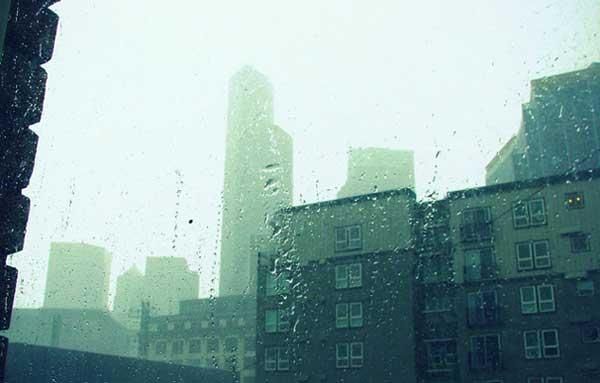Hurricane Irene Will Make New York Skyscrapers Sway

When Hurricane Irene comes a-knocking, these buildings will start a-rocking.
Powerful winds have caused New York City's skyscrapers to sway back and forth for more than 100 years, leading to seasickness in their inhabitants and interest from engineers looking to mitigate the problem.
A little sway actually makes the building stronger, as structures with a bit of give can withstand higher stress than brittle forms. Despite how the rocking feels to the poor residents forced to endure a shaking floor, no modern skyscraper has been brought low by wind alone, said Christian Meyer, a professor of civil engineering at Columbia University. Modern innovations such as shock absorbers and balancers protect buildings from wind, while simultaneously lessening the drastic pitch and roll experienced at the top floor of the world's highest buildings.
"It's a fundamental structural engineering problem. On one side of the equation, you have the load effect. That can be a hurricane, an earthquake, a missile, anything. On the other side, you have the strength of the building, which you the engineer can control, and it must always be larger than or equal to the loading," Meyer told InnovationNewsDaily. "If you have a force that moves, that impact sets the structure into vibration. The main component is static pressure, but as soon as the pressure changes, motion begins. No matter how strong you make a building, they vibrate at some load."
As the building gets taller, the swaying gets worse, since wind speed and other loads increase with altitude. This can make the top floors of the world's biggest building unbearable. To prevent these top floors from shaking, engineers can deploy a number of different technologies.
One piece of equipment, called a tuned mass dampener, is essentially a 400-ton concrete pendulum that swings independently of the building. When the structure sways to one side, the dampening weight pulls the building back up straight. This technology is often used to make buildings earthquake, as well as hurricane, resistant.
Other buildings, such as the old World Trade Center Towers, featured individual shock absorbers for each floor. Each floor moved independently of the other ones, effectively turning the entire structure into a giant spring that can dissipate the energy that would cause the top levels to swing wildly, Meyer said.
Sign up for the Live Science daily newsletter now
Get the world’s most fascinating discoveries delivered straight to your inbox.
Then there's Trump Tower in New York City's Columbus Circle, the building that used to make people sicker than a roller coaster.
"If a building vibrates too much, you get 'sick building syndrome.' That's a common problem," Meyer said. "There was this building at Columbus Circle, that’s now the Trump Tower, the building vibrated excessively during any major wind storm, and you saw hundreds of people coming out all green and yellow like they were seasick. Now Trump, smart guy that he is, realized he could get the building for very little money, but would have to do a major improvement. He put a shield wall in the center of the building, strong enough to stop the vibrations, but where no one could see it. He cured the building."
This story was provided by InnovationNewsDaily, sister site to LiveScience. Follow InnovationNewsDaily on Twitter @News_Innovation, or on Facebook.












